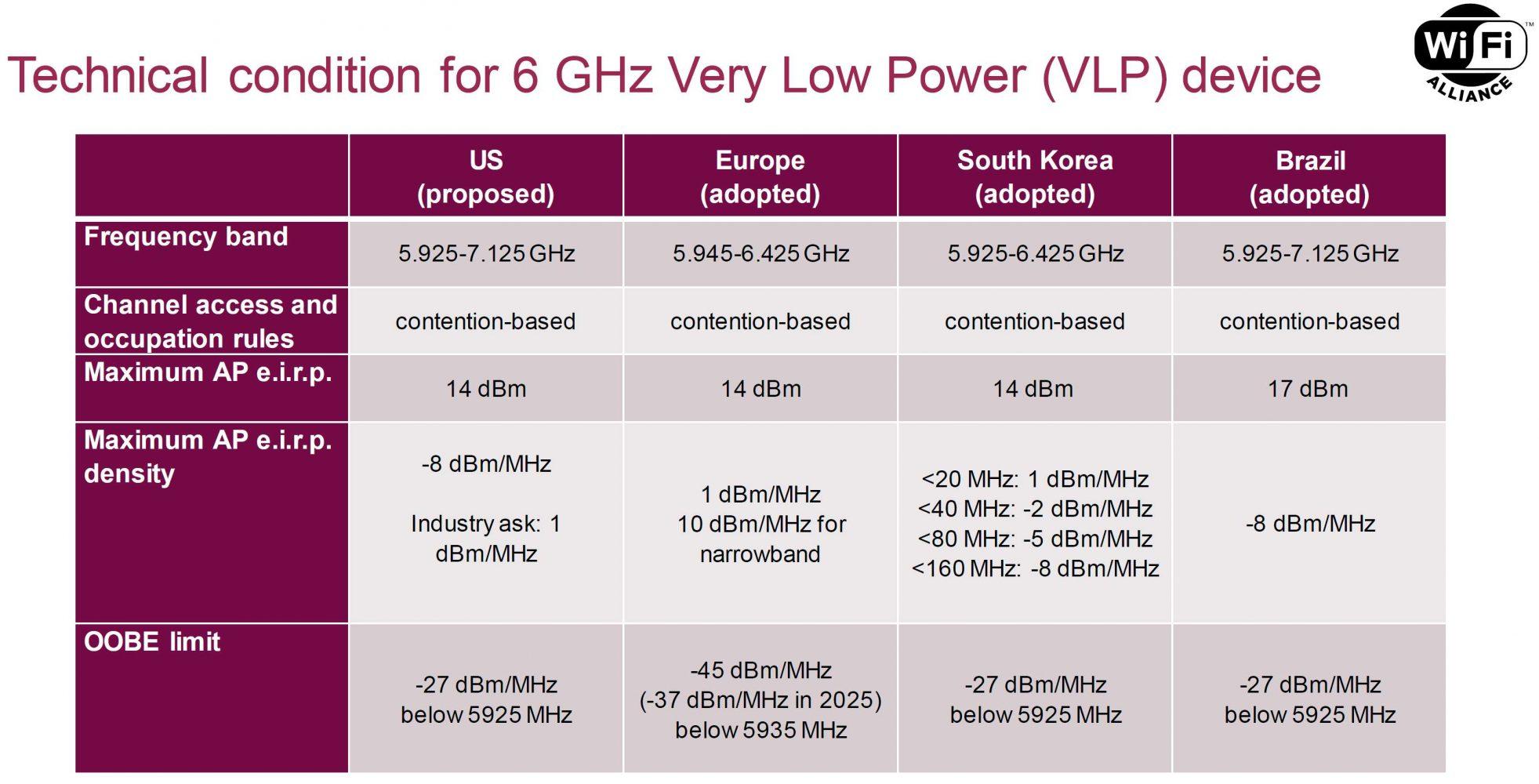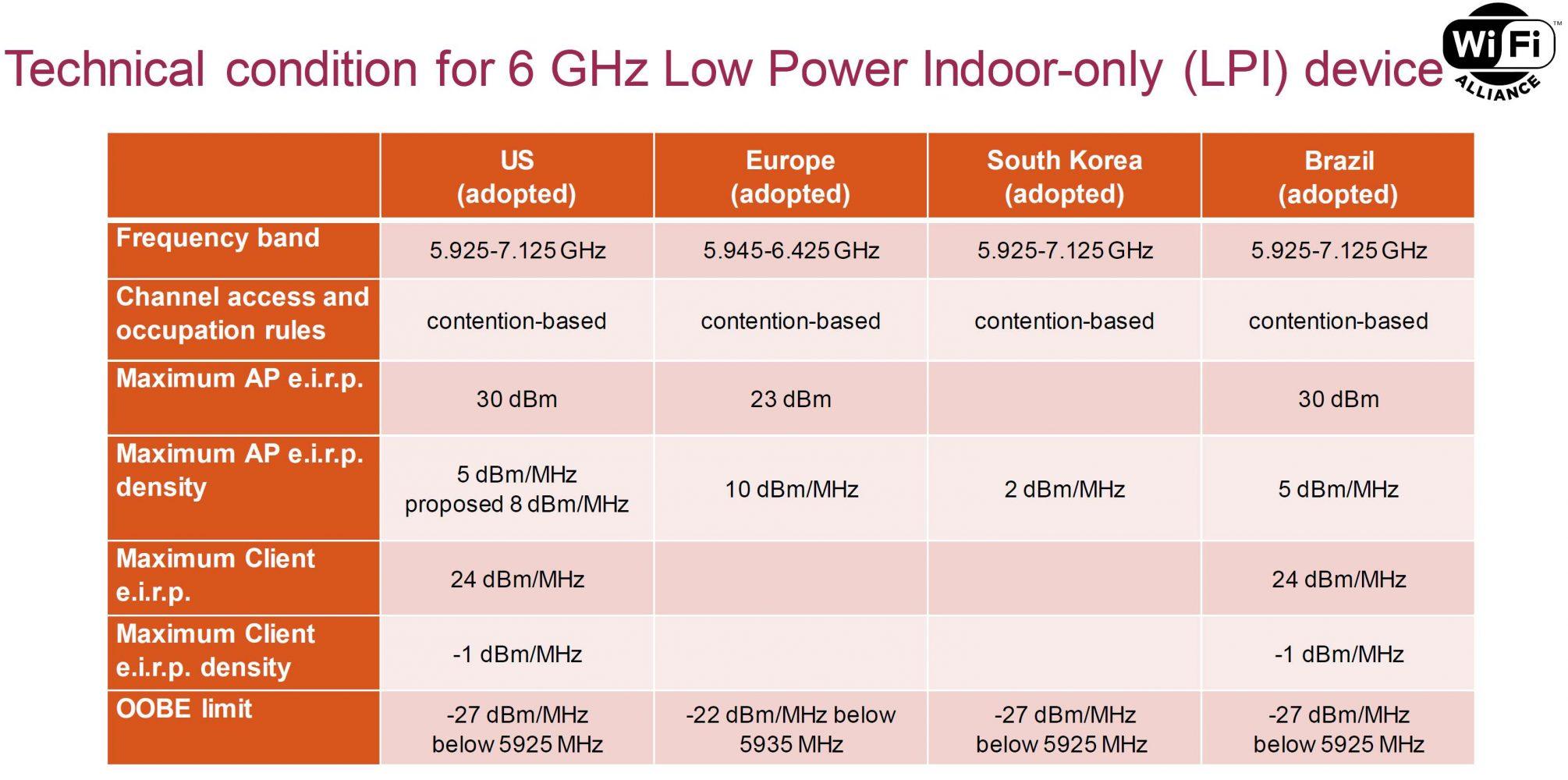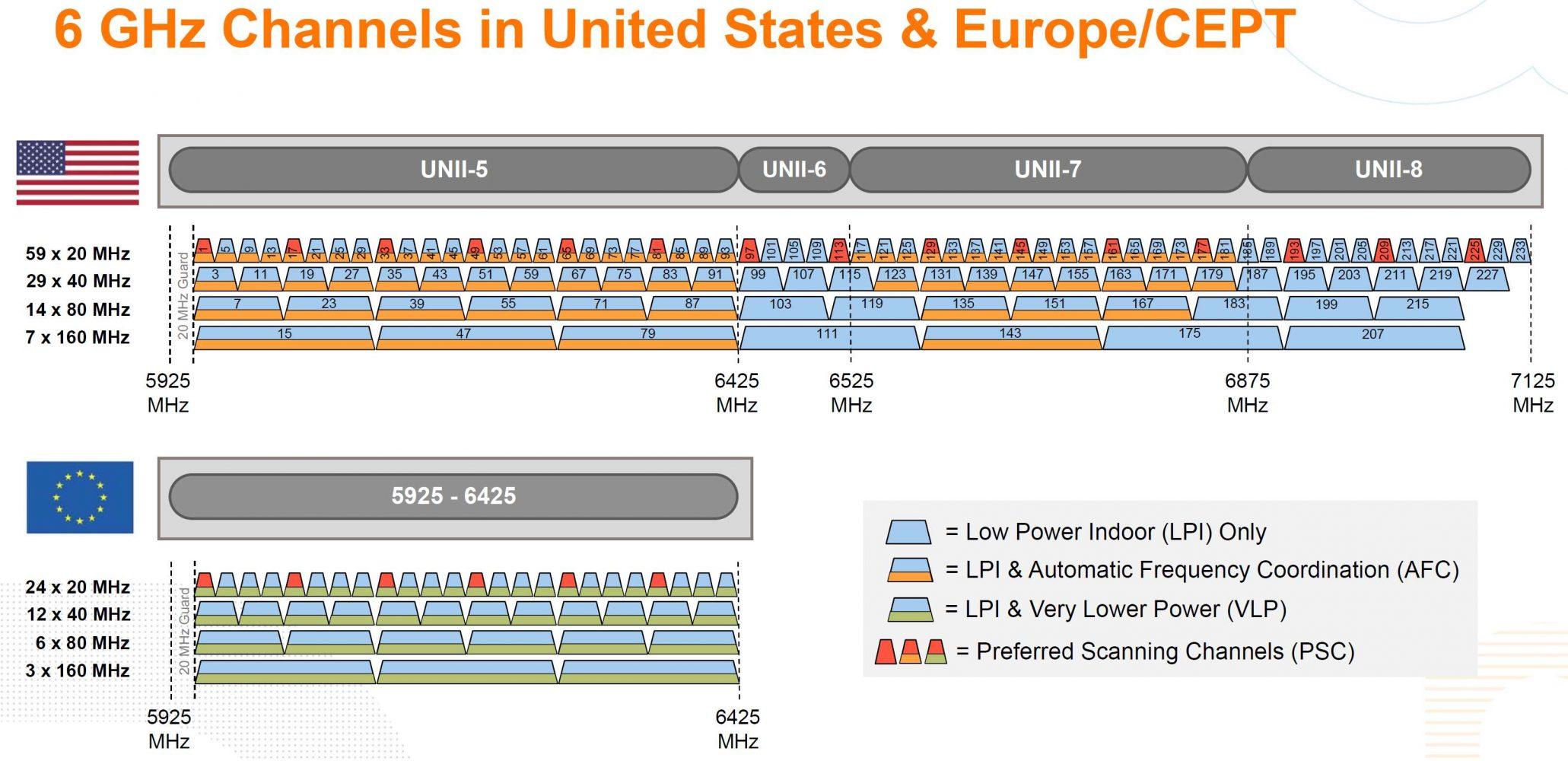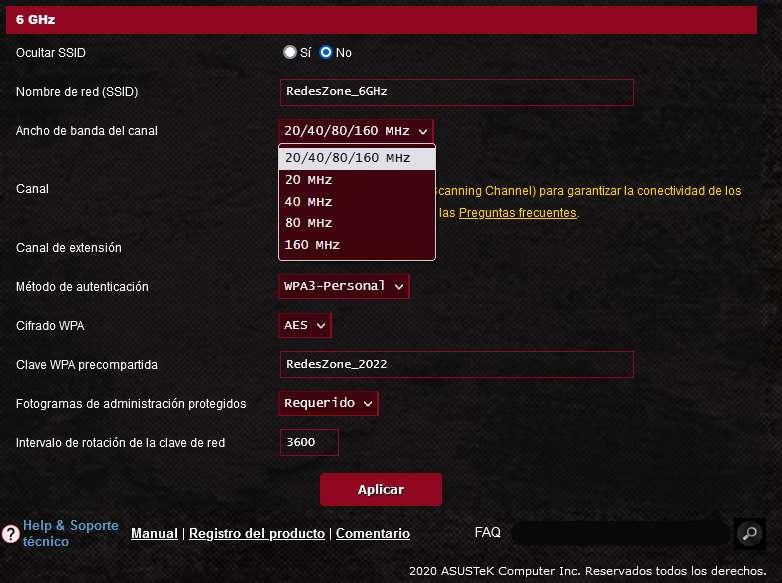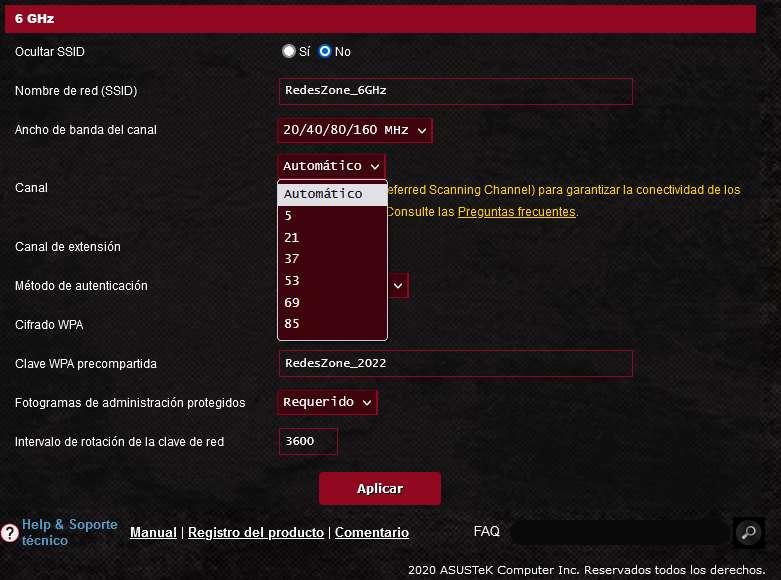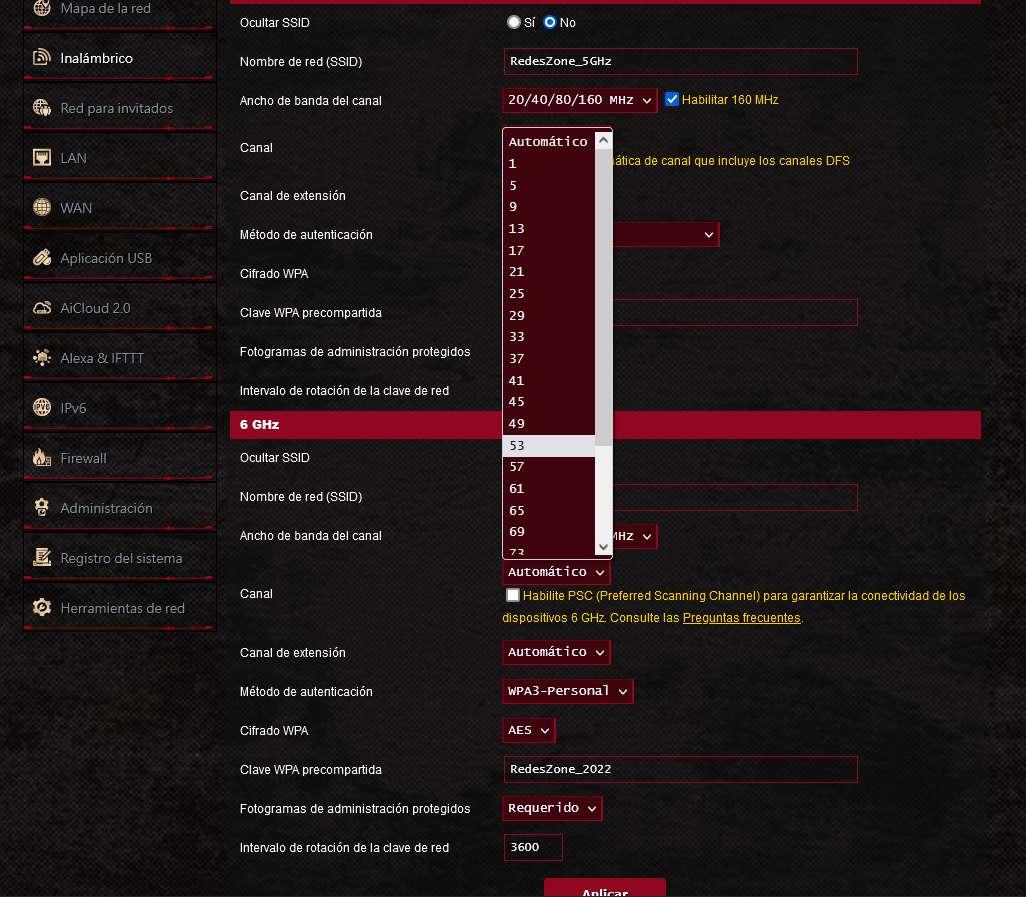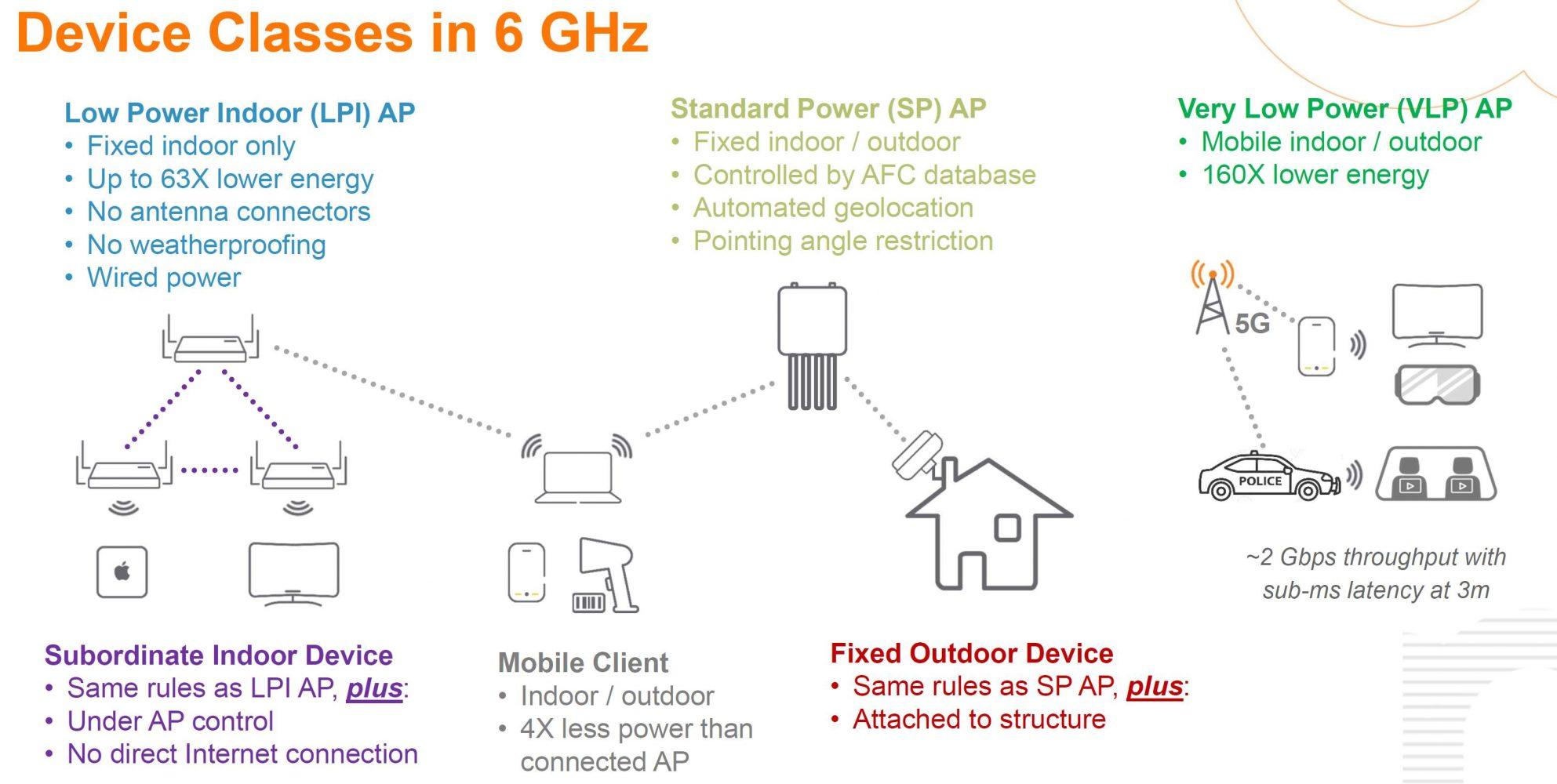
This new frequency band of 1,200MHz in 6GHz is divided into different bands, something similar to what happens with the 5GHz band where we have different bands within a larger frequency band. These frequency bands in 6GHz are the following:
- UNII-5: 5925-6425MHz (500MHz)
- UNII-6: 6425-6525MHz (100MHz)
- UNII-7: 6525-6875MHz (350MHz)
- UNII-8: 6875-7125MHz (250MHz)
As you can see, the largest frequency band is UNII-5, followed by UNII-7, and then UNII-8 and UNII-6. Thanks to these frequency bands, we are going to have different channels available with different channel widths, specifically we can have:
- Up to 59 new channels with 20MHz channel width.
- Up to 29 new channels with 40MHz channel width.
- Up to 14 new channels with 80MHz channel width.
- Up to 7 new channels with 160MHz channel width.
- Up to 3 new channels with 320MHz channel width.
The most notable are the 7 new channels with 160MHz channel width, as it will allow us to obtain great wireless performance. The future Wi-Fi 7 that is yet to come already enables channel widths of up to 320MHz, so we can achieve twice the (theoretical) speed of current equipment, while keeping the same number of antennas.
With Wi-Fi 6E, a classification of the different devices that emit in this frequency band has been made, depending on the class of device we will have some allowed bands, transmission power and other characteristics.
device classes
In the 6GHz band there are a total of three different devices, which have different permissions to broadcast in the different WiFi frequency bands. Next, we explain the different devices that exist or will exist soon:
- Low Power Indoor (LPI) AP: these types of devices are the WiFi routers or WiFi access points that we all know, they are aimed at indoor environments exclusively according to current regulations, although this could change in the future to have outdoor WiFi access points.
- Standard Power (SP)AP: These types of devices can be placed indoors or outdoors, and are controlled by a centralized device that will configure the device and know the exact location of the device via GPS, since we will have automatic geolocation. These are basically the WISPs that want to broadcast in this frequency band.
- Very Low Power (VLP) AP: This type of device can be portable or MiFi routers, and are oriented both indoors and outdoors, and emit very little power.
In the following photo you can see a summary of the classes of devices in the 6GHz band:
Of course, we also have client devices that comply with the same rules or emit with a lower power than the AP where it has been connected. As you can see, we have the following devices:
- Subordinate Indoor Device: They are the WiFi clients, we have the same LPI rules, plus the control is done by the WiFi access point and it does not have an Internet connection directly.
- MobileClient: It can be indoor or outdoor, and it has four times less power than the AP where it has been connected.
- Fixed Outdoor Service: Same rules as Standard Power but it’s in a frame, it’s basically the external antennas for WISP.
Before ending the class of devices, the Wi-Fi Alliance has published a table where we will be able to see the frequency band for VLP devices and also for LPI devices in terms of available WiFi frequency bands, maximum EIRP power and Other features.
Below, you can see the summary table with the comparison between the US and Europe (which has already been adopted):
Below, you can see the summary table with the comparison between the US and Europe (which has already been adopted). The most remarkable thing is that in Europe we will have a maximum power of 23dBm, and in the US we will have a clearly higher emission power with up to 30dBm. This means that in Europe we will have less WiFi coverage, in addition, we must take into account that in Europe we only have the UNII-5 channels, however, in the US we have the entire 6GHz band.
Now that we know the classes of devices and the emission power characteristics, we are going to see what bands and channels we currently have available in Europe, although this could change in the future.
Bands and channels available in Europe
Currently the frequency band that we have available in Europe is only the UNII-5 that has 500MHz of frequencies, therefore, although we have the largest frequency band (where more channels fit), we will not be able to enjoy the UNII- 6/7/8, as they are only available in the United States.
Having only a maximum of 500MHz of bandwidth, from the 5925MHz frequency to the 6425MHz frequency, the new channels that we have would be as follows:
- Up to 24 new channels with 20MHz channel width.
- Up to 12 new channels with 40MHz channel width.
- Up to 6 new channels with 80MHz channel width.
- Up to 3 new channels with 160MHz channel width.
- Up to 1 new channel with 320MHz channel width.
As you can see, basically what happens is that the number of available WiFi channels is reduced by half. Above all, this affects if we use a channel width of 160MHz because we go from 7 new channels to 3 channels, that is, less than half. In the following image you can see the channels available in the US and Europe, in addition, we can also see that in Europe we can only use the LPI and VLP devices that we have seen previously, but we cannot use the Standard Power device right now.
If we go to the firmware menu of the ASUS ROG Rapture GT-AXE11000 router and configure the router with 20/40/80/160MHz channel width, like the following:
The channels that are within the UNII-5 frequency band will appear. If we activate the PSC (Preferred Scanning Channel) functionality, only 6 channels will appear, if we deactivate it, more will appear, but it does not matter because if we use 160MHz of channel width, we will take several channels of these when we choose another. For example, if we choose channel number 5 or number 21, it is exactly the same channel on 160MHz, since only 3 channels of 160MHz width enter this frequency band.
If you deactivate the PSC functionality, we will have more channels available to us, such as the following:
As you have seen, in Europe we are only going to have the channels of the UNII-5 frequency band, so we will have fewer channels available in all channel widths compared to the US, in addition, the emission power is also clearly lower than the US, so in Europe and Spain WiFi 6E will work worse compared to the US.
